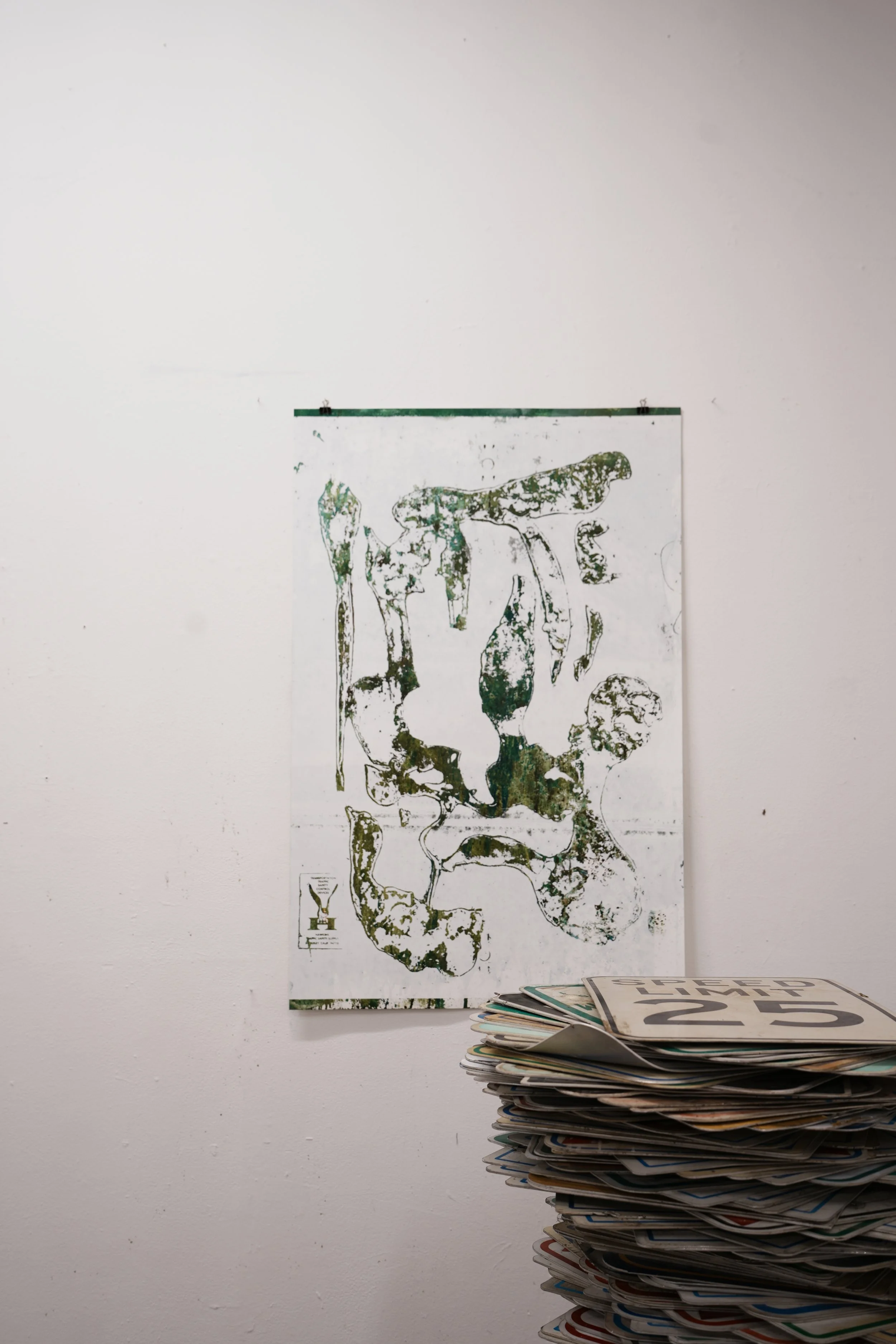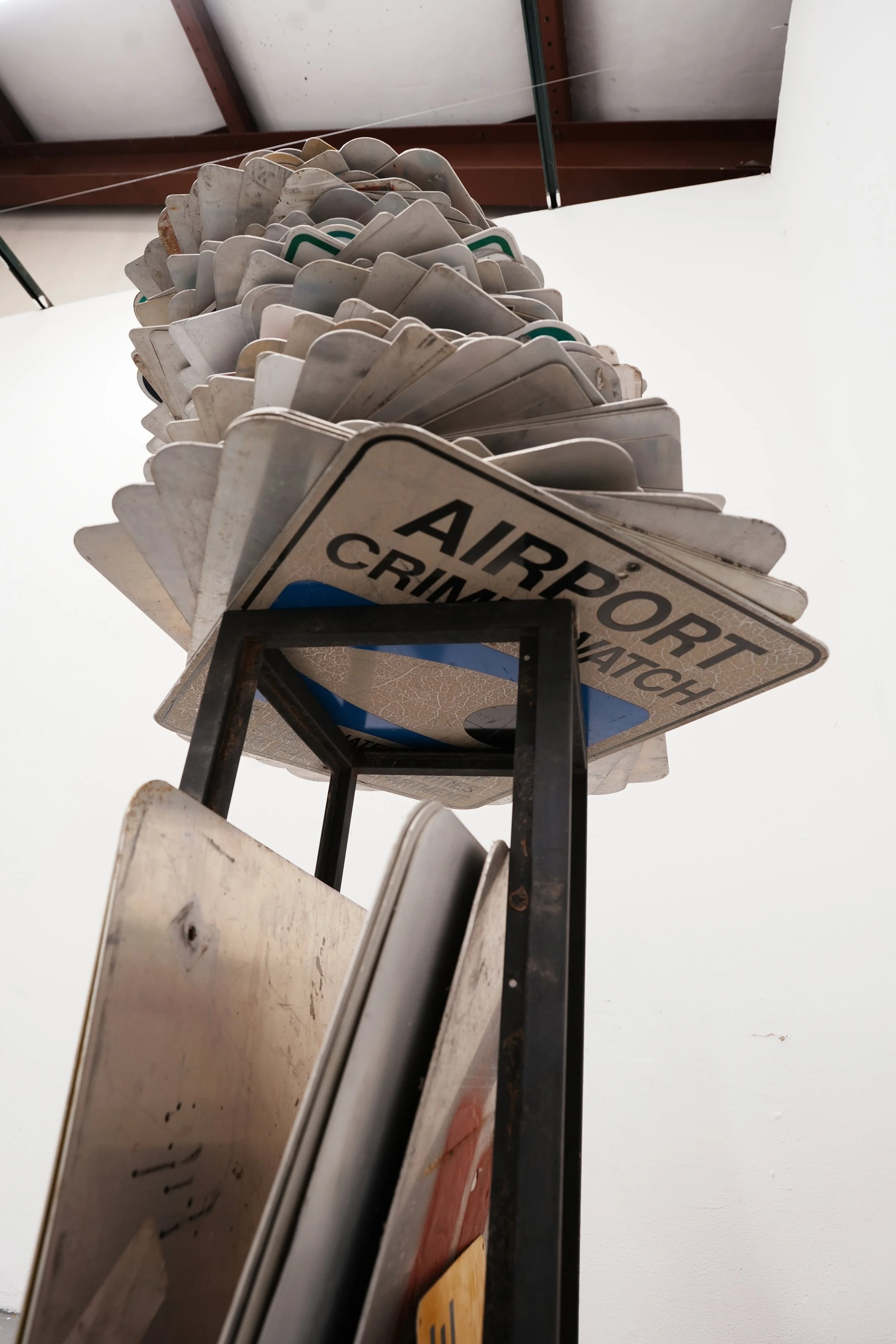
Map of Absence
Behind-the-Scenes for Untitled: Signal Index & Unknown Provenance & Minor Compositions & American Darling
Jamal Gunn Becker
Jamal Gunn Becker investigates the shifting boundary between the hidden and the visible, the structured and the disrupted. Working through traditional modes of making—painting, printmaking, sculpture, and text—he explores how meaning is constructed, withheld, or fragmented. His work often centers on language and the trace of the human hand, using physical mark-making as a way to counteract the slick abstraction of modern systems of messaging. In Becker’s studio, materials are layered, interrupted, or reassembled to highlight the tension between permanence and erasure, between objecthood and code.
Operating within the margins of systems—visual, linguistic, architectural—he constructs forms that feel both declarative and broken. Symbols appear half-readable; surfaces reveal the labor of making while refusing full transparency. Becker’s works do not explain. Instead, they hold space for doubt, memory, and partial understanding. In this way, he reframes authorship as something porous and contingent, rather than fixed.
Born in California, Gunn Becker received his BFA from ArtCenter College of Design. He currently is a second-year MFA candidate in the department of Art and Art History, at UC Davis.
Past Works
Double Cartography
2024, Oil paint, lettering enamel, marine varnish, wood, bricks, found object (decommissioned chairs from the physics department). Dimensions variable.
Institutional Landscape
2024, Repurposed sheet metal, removed from decom-missioned filing cabinets, folded and formed with wood frames, nails, and glue. Dimensions variable.
Behind The Scenes:
Map of Absence
Behind-the-Scenes for Untitled: Signal Index & Unknown Provenance & Minor Compositions & American Darling
People in the city follow signs every day, most of us never question how these symbols build the logic of a place, why and how these signs decide our movement?
With street signs as its clearest remains, Jamal Gunn Becker draws on ceramic sculpting and printmaking to reconstruct discarded infrastructure. He dismantles and reconfigures the arrows, ridges, and textures once meant to instruct, unearthing traces that speak to the present and stretch across time.
Jamal inverts the street signs he collects. On their reverse sides, welding marks and burnt glue leave black scars, which seem to uncoil from the traffic anchors, forming veins of maps—of rivers, organisms, mountains, galaxies—parts of nature we have yet to observe. These marks are more than typographic; they act as a new language that describes a nonlinear time and fate. When stamped with symbols and printed in color, each sign carries its future: where it will be installed, what it will instruct. Once welded into place, its past, present, and future are sealed at once, all its dents, splatters, and burn marks are pressed into the surface as a scar that holds its record and a seal that ends its path.
To Jamal, the sign is a clay vessel, a container of information. Its polished outer face signals to the public, while its inner life is hidden beneath a narrow mouth, inscribing a story that cannot be read at first glance.
Jamal overlays and rubs the scattered traces of Davis’s water infrastructure on clay to reveal a blueprint of how the city is managed. These traces are not maps, and the stories they carry are no longer about the signs or infrastructure alone. They speak to the cultural and political life of the city, where decisions were made, where rules were placed, and where they eventually fell apart. What they reveal is a timeline of those who existed, of what they planned, how it shifted, and continues to unfold.
Photo credit: Edgar Zhang
Writer Edgar Zhang & Rachel Wang Editor Yuchen Hou
Back to Art Studio Graduation Thesis 25’
The physical booklet will be available in the lobby at @manettishrem throughout the show, June 5 to June 22, 2025.








